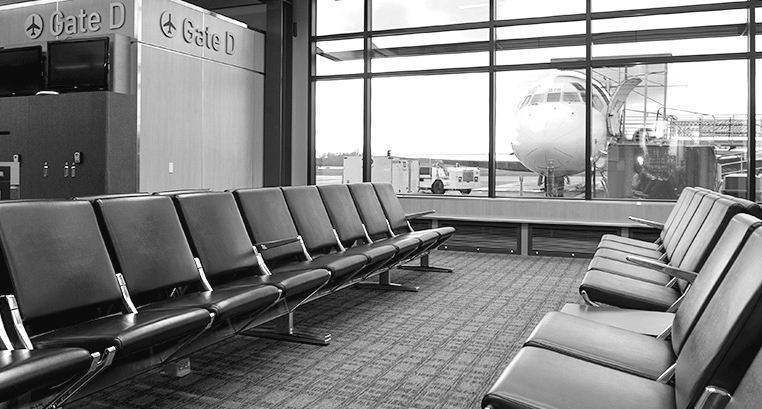If asked to name my favorite U.S. airport, most days I’d say it was Smith Reynolds, more commonly known as the Winston-Salem airport in North Carolina. What I’m thinking of is not Smith Reynolds as it exists today, but as it was in the latter years of the 20th century, when I had business reasons to visit Winston-Salem on several occasions.
My flights to Smith Reynolds were operated by US Airways Express; they were the only scheduled commercial flights available, until service was terminated in 2000. Those flights were a carry-over from US Airways’ acquisition of Piedmont, which was headquartered in Winston-Salem.
RELATED: Alaska Air Buying Virgin America? Say It Ain’t So!
At the time, the terminal was little more than a cinderblock bunker with a single ticket counter against one wall and a few plastic chairs along the opposite wall. There must have been a restroom off to the side, but I don’t recall seeing it. The were no concession stands for snacks or reading material. That row of plastic seats was as close to an airport lounge as you’d find at Smith Reynolds.
Arriving passengers were dumped directly onto the tarmac, where they gathered their bags and walked through the terminal to the street and adjacent parking area, a distance of 50 or so yards.
It was, in short, as bare bones as an airport could be. And it suited me just fine. Better, in fact, than any of the bigger, more amenities-rich airports that make a point of boasting of the number of airlines hosted, or passengers served, or flight arrivals and departures.
That’s just me. But it turns out that I’m not alone in preferring a smaller airport to the bustling mega-hub behemoths that serve so many major metro areas. According to a new study by Phoenix Marketing, airport size and traveler satisfaction are generally inversely related.
The study results reflected ratings of the country’s 250 busiest airports by 170,000 passengers. Among the largest airports, the scores of the five top-rated airports ranged between 76 percent and 82 percent. But the top-five scores of the smaller airports ranged from 88 to 93 percent.
Top 5 Large Airports
- Tampa International – 82% (Tampa, FL)
- Salt Lake City International – 81% (Salt Lake City, UT)
- Charlotte/Douglas International – 79% (Charlotte, NC)
- Chicago Midway International – 78% (Chicago, IL)
- Hartsfield-Jackson Atlanta International – 76% (Atlanta, GA)
Top 5 Medium Airports
- Eppley Airfield – 90% (Omaha, NE)
- Theodore Francis Green State – 89% (Warwick, RI)
- Palm Beach International – 83% (West Palm Beach, FL)
- General Mitchell International – 83% (Milwaukee, WI)
- Raleigh-Durham International – 82% (Raleigh-Durham, NC)
Top 5 Small Airports
- Bellingham International – 93% (Bellingham, WA)
- Gerald R Ford International – 91% (Grand Rapids, MI)
- Hilo International – 91% (Hilo, HI)
- Wichita Dwight D Eisenhower National Airport – 89% (Wichita, KS)
- Spokane International – 88% (Spokane, WA)
The study’s authors explained the discrepancy in terms of airports’ pre- and post-security features. “Many smaller airports outperform their larger counterparts on passenger satisfaction measures related to pre-security items (e.g., parking, checking-in) due to their ease, while many passengers prefer the post-security amenities (e.g., food and beverage, retail, lounges) larger airports offer for the variety.”
That sounds about right. But even if you find that explanation less than convincing, the fact remains: Smaller is better.
Reader Reality Check
What’s you favorite U.S. airport?
After 20 years working in the travel industry, and almost that long writing about it, Tim Winship knows a thing or two about travel. Follow him on Twitter @twinship.
This article first appeared on SmarterTravel.com, where Tim is Editor-at-Large.


Leave a Reply